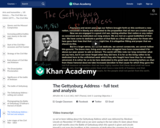
A close reading of the Gettysburg Address.
- Subject:
- History
- U.S. History
- Material Type:
- Lesson
- Provider:
- Khan Academy
- Provider Set:
- Khan Academy
- Author:
- Kim Kutz
- Date Added:
- 07/15/2021

A close reading of the Gettysburg Address.
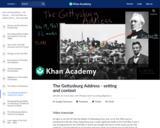
The Gettysburg Address was delivered by Abraham Lincoln on November 19, 1863. In this video, Kim sets the stage for the address and describes the scene at the cemetery.

Steel, telephones, elevators! Kim and David discuss the technological innovations that made the Gilded Age possible.

The William A. Gladstone Collection of African American Photographs provides almost 350 images showing African Americans and related military and social history. The Civil War era is the primary time period covered, with scattered examples through 1945. Most of the images are photographs, including 270 cartes de visite. For the list of approximately 100 different photographers, see the Creator/Related Names Index.

This site presents documentation of the eruptions of all volcanoes during the past 10,000 years. Visitors can review volcanic activity reports, view geographic and geologic information for all Holocene volcanoes (those with known activity during the last 10,000 years), and order research and publications by Smithsonian volcanologists and their colleagues.

This video segment adapted from NOVA/FRONTLINE looks at the future of global warming as developing nations, including India and China, increase their need for energy.
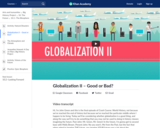
In which John asks whether globalization is a net positive for humanity. While the new global economy has created a lot of wealth, and lifted a lot of people out of poverty, it also has some effects that aren't so hot.
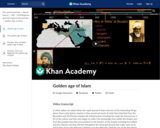
The Abbasid Caliphate becomes a center of learning from the 9th to the 13th centuries, collecting the knowledge of India, China and ancient Greece while also making significant new contributions to mathematics, astronomy, philosophy, medicine and geography.
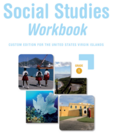
This resource is intended for Grade 1
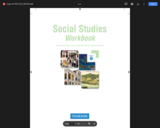
This resource is intended for Grade 2.

This art history video discussion examines Grant Wood's "American Gothic", 1930, oil on beaver board, 78 x 65.3 cm / 30-3/4 x 25-3/4 inches (The Art Institute of Chicago).

In this activity (located on pages 9-14 of PDF), learners visit a cemetery to examine the distinguishing characteristics of rock weathering. After researching stone weathering and acid rain, learners apply their knowledge to collect data related to chemical decomposition and physical disintegration at a cemetery site. This detailed lesson guide includes tips for educators, pre/post activity suggestions, hands-outs, and background information.

How can artwork better help us understand the American Experience during the 1930s? This portion of the Scenes of American Life module looks at artwork and the American experience during the Great Depression.
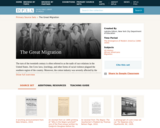
This collection uses primary sources to explore the Great Migration. Digital Public Library of America Primary Source Sets are designed to help students develop their critical thinking skills and draw diverse material from libraries, archives, and museums across the United States. Each set includes an overview, ten to fifteen primary sources, links to related resources, and a teaching guide. These sets were created and reviewed by the teachers on the DPLA's Education Advisory Committee.
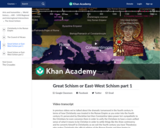
After the fall of the Western Roman Empire in the 5th Century, division between the Latin Church in the West and the Greek-speaking church in the East widen over issues such as primacy of the Bishop of Rome, iconoclasm, filioque and the crowning of Charlemagne as Holy Roman Emperor.

After hundreds of years of increasing division between the Latin Church led by the Pope in Rome and the Eastern. Greek church led by the Byzantine Emperor and the Patriarch of Constantinople, the Great Schism in 1054 marks the beginning of the formal division between what will be known as the Roman Catholic Church and the Eastern Orthodox Church.
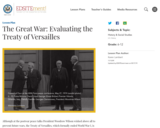
Was the Treaty of Versailles, which formally concluded World War I, a legitimate attempt by the victorious powers to prevent further conflict, or did it place an unfair burden on Germany? This lesson helps students respond to the question in an informed manner. Activities involve primary sources, maps, and other supporting documents related to the peace process and its reception by the German public and German politicians.
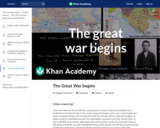
World War I began after Serbian nationalist Gavrilo Princip assassinated Archduke Franz Ferdinand of the Austro-Hungarian Empire on June 28, 1914. Austria-Hungary declared war on Serbia, whose ally Russia then mobilized for war. An alliance between Germany and Austria then prompted Germany to preemptively declare war on Russia, Serbia, and Russia's ally France. Germany then attacked France through Belgium, activating an alliance between the United Kingdom and Belgium, and the United Kingdom declared war on Germany and Austria-Hungary. Created by Sal Khan.
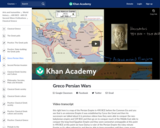
What were the Greco Persian wars and how did they start? Sal explains.
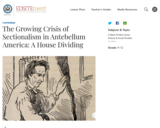
In this unit, students will trace the development of sectionalism in the United States as it was driven by the growing dependence upon, and defense of, black slavery in the southern states.